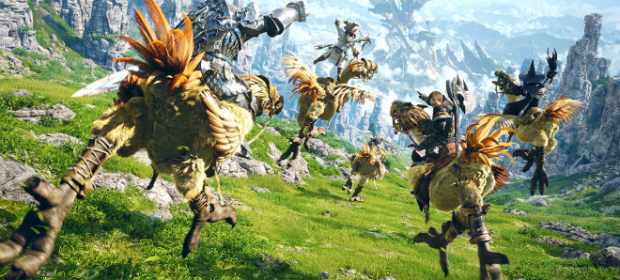In terms of breadth and scope, an MMORPG set in the universe of Square-Enix’s Final Fantasy series is a mammoth proposition. Final Fantasy has existed, in one form or another, through games and spin-offs, animé, CGI movies, graphic novels and books for almost 25 years. It’s a mega-franchise, an important, nay essential, weave in the great tapestry that is the history of video games.
Of course, it’s been playable online before, in Final Fantasy XI, but not with the level of ambition with which Square approached Final Fantasy XIV. It’s almost no surprise that it went massively, massively wrong the first time round. Without going into great detail, the original release of Final Fantasy XIV – back in September of 2010 – was a resounding failure, prompting significant changes to the development team and the resignation of the original director. Despite heavy overhauls and repeated patches, including the removal of the particularly hated Fatigue System (the longer you play in one go, the less experience and loot you earn), Square-Enix struggled to drag FFXIV out of the hole it had dug for itself. In the end, they announced that it was to be scrapped, and re-launched as Final Fantasy XIV: A Realm Reborn.
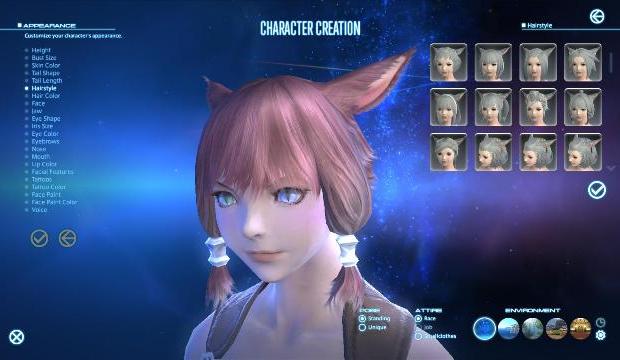
The realm of Eorzea (on the world of Hydaelyn) was remodelled, redistributed between 40 zones as opposed to the original 8. While elements of the story remain, A Realm Reborn is set around five years after the end of FFXIV’s main arc. Square-Enix came up with a great cataclysm known as the Calamity, created when the Garlean Empire crashed the moon of Dalamund into Eorzea and inadvertently freed the Primal dragon Bahamut, whose wrath reshaped the world.
The event marks the end of the Sixth Astral Age and the beginning of the Seventh Umbral Age – a time of strife and darkness – and sees the Garlean Empire and their army of gaudily dressed marauders, continue their campaign to invade an Eorzea that is desperately trying to rebuild . It also sees an influx of demonic beings known as the Voidsent, whose presence is tied to Bahamut.
The player character is a mysterious adventurer who arrives in his or her specific starting zone with a desire to forge a name through glory, power or heroism, but who – along with other special individuals – soon finds their fate linked irrevocably to the fate of the world. There are still five playable races to choose from, but whereas the original FFXIV was limited, with several of them being gender-locked, ARR doesn’t suffer from that, allowing for even more freedom when crafting your avatar.
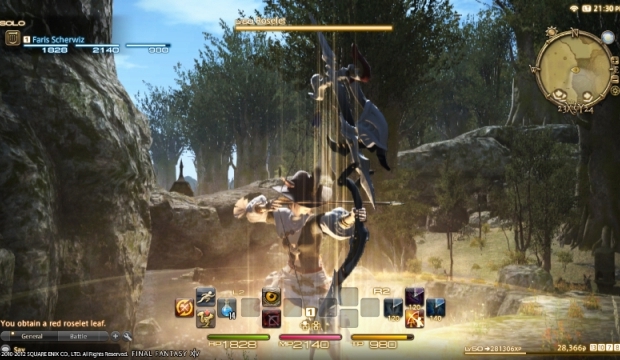
Certain elements pertaining to character development remain from the original game, including the unique class system. Rather than impose any rigid restrictions on class choice, FFXIV allows you to switch classes simply by altering the weapons in your hand. You’re able to gain experience in any discipline you follow for as long as you follow it, meaning that you can create a multi-tasking character able to adapt to various challenges. It’s a wonderfully malleable system, but it does slightly detract from the role-playing potential of the world; locking yourself into a class for life, a la World of Warcraft, makes decisions seem more final and, of course, you grow with your character, you come to know their strengths and weaknesses upside down and inside out. That being said, the freedom to experiment and find a style (or styles) that suits you is welcome and refreshing.
After the character creation I hit something of a wall when every server I tried to join for almost two days was over-populated. Annoying as it was for me, it’s testament to the popularity of Square-Enix’s reboot that I couldn’t even get into it because it was so busy. Once I finally did enter the game, it was more than worth the wait.
As you’d expect, Eorzea is massive, and it’s obvious from the off that the redesign has been incredibly beneficial. The world looks better, the new graphics engine bringing a grittiness to the environments while still maintaining a style that is quintessentially Final Fantasy. Outside of the cities there’s an awesome sense of scale and, although the draw distances aren’t great (this is an MMO with an incredible amount of balls to juggle at once), you immediately feel like a tiny cog in a greater machine when you step outside the safety of the city walls. Within, however, it’s not quite so impressive.

While the starting cities are enormous, they’re a mixed bag in terms of style. Gridania and Limsa Laminsa are quite beautiful and their sense of scale is in place; by comparison the Hyur (human) starting city of Ul’dah is less awe-inspiring. The scenery is very generic, and there’s so much empty space that you’re thankful for the Aethernet crystals dotted around the place that facilitate fast travel. Small crystals allow you to move around the cities once you’re attuned, and larger ones out in the world link to the central crystal in each city (you’ve also got a handy ‘Return’ action that will take you back to whichever city you’re currently bound to).
Moving around the open city is surprisingly quick thanks to the crystals and your character’s short-term sprint ability, and everywhere you look other players lend to the appearance of a bustling metropolis. Unfortunately, stopping for a little “How’s your father?” is hardly relaxing. There’s no voice-chat, so on the PlayStation 3, you’re resigned to communicating with emotes (often amusing) or inputting text with the clunky pad-controlled keyboard (unless you happen to own a keyboard peripheral, which many don’t). It’s also fairly easy to spot the MMO fans from the Final Fantasy fans with character names and in-game behaviour that made me immediately hanker after a dedicated RPing server a la World of Warcraft. I’m not heavily into playing a role in my role-playing games, but I prefer the greater immersion and respect for the genre and universe that you normally find in a dedicated Role-Play server.
Elsewhere, Final Fantasy XIV impresses, particularly in the aesthetics. The majority of dialogue is text-based, so lip-synching isn’t an issue, and the character models are pretty good. There’s enough customisation to ensure that you won’t find two identical adventurers (though the NPCs can blend together now and then), and there’s a colossal selection of clothing, armour and accessories with which to outfit your avatar. As with all MMORPGs, it all seems daunting for the first few hours, but slowly the more intricate mechanics and subtle nuances of the world begin to take shape and it’s not long before you’re cycling through vendor menus looking for the slightest improvement to your stats and reading your character sheet like it’s no more complex than a children’s book.
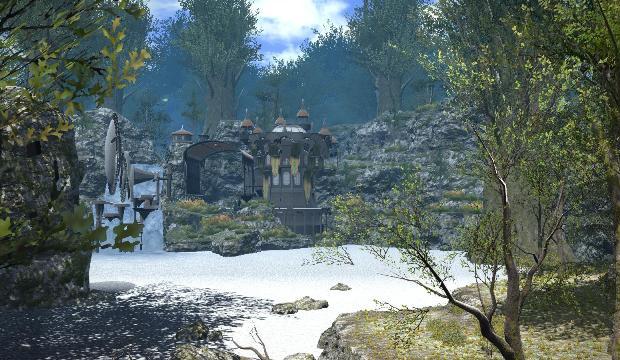
Initially stepping out into Eorzea isn’t as daunting as similar first steps in other MMOs, as a lot of time is spent running fetch quests and errands inside the starting city to help familiarise you with the workings of the world. The more complex elements, like crafting and trading come a little later, and all you’re tasked to do at the beginning is join the Adventurer’s Guild and then visit the other Guilds to see what needs to be done around the city.
The outside is fairly safe in the starter zones, and all you’ll need to worry about are low level critters that won’t even become aggressive unless you attack them. Combat is based on the queue system that has become standard in MMORPGs, but the control interface translates well to the PS3 controller, with four skills mapped to the face buttons and four mapped to the D-Pad, and the ability to hold down R2 to open up secondary commands, allowing for a total of 16 hotkeys. Healing potions, fast travel abilities, attacks and buffs can all be mapped here, making battles much more intuitive.
Following the main story missions will lead to your first instanced boss fight within about three hours (allowing time to indulge in a few side quests, that is). These battles take you and your party (if you choose to have one) into a separate area purpose built for you and you alone, meaning no other players can interfere with the fight. The combat in and outside instanced areas is fast-paced, but (particularly on PS3) suffers slowdown here and there, even when you’re only battling a couple of enemies. Also, in typical Final Fantasy fashion, you pick up loot automatically and are notified by a pop-up. As a result it’s easy to miss what you collected and wander around with an inventory full of stuff you neither understand or knew you had. There doesn’t seem to be a drop rate for quest items, at least early on, and so if you stack up kill quests with collection quests, you can usually polish off a stack to hand-in all at once.
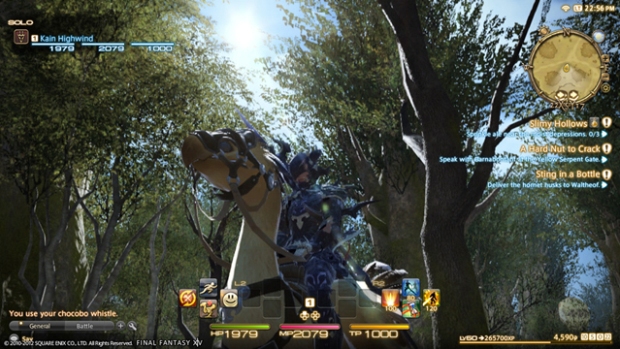
Similarly to other titles in the genre, enemies are “tagged” when you land a hit, so during kill quests (of which there are many) your kills can’t be ninja’d by the unscrupulous. Sadly, the side-quests during those early hours are fairly dull and run-of-the-mill. It’s excusable to an extent, as they are designed to ease you in, but it’s tedious when you travel to an area to kill four of something, only to return, hand-in the quest and be given another task to kill something else in the same area you’ve just been to. That being said, between the Aesther crystals and the Chocobo mounts (unlocked at a comparatively early juncture), fast travel and on-foot movement are not only hugely convenient, but quintessentially Final Fantasy. Who could enjoy an FF title without a Chocobo in it? Or a Moogle, for that matter.
Wandering the wilds will occasionally see you stumble upon FATE encounters. Full Active Time Events are randomly-occurring battles against high-level mobs that anyone is free to join. When the fight is over, everyone is rewarded according to their character level and contribution to the event. I’ve taken part in three so far, and I have to admit that, from a gameplay perspective, they’re hit and miss. They don’t function like random wandering elites, because the game announces when you’re near one – and that announcement is almost impossible to ignore (as is the icon on the map). As such, they’re often so swamped with players that you can’t even see what you’re fighting, let alone understand why. They reminded me most of Defiance’s Ark-falls, in that they feel like uncoordinated free-for-alls, with the caveat that you don’t often know what you’re attacking and there’s very little context to the events. That said, they’re incredibly compelling – and there’s every chance that when you’re out of the densely-populated starter zones they’ll be a more tactical affair.
Obviously, everything about the starting zones is built to get you hooked and keep you playing. Vendors sell items that are set tantalisingly above your current level, NPCs offer quests that either you can’t quite accept or are pitched far above you. The level cap of 50 (which will almost certainly be extended through expansion DLC) seems so far away, yet the journey to get there is irresistible.
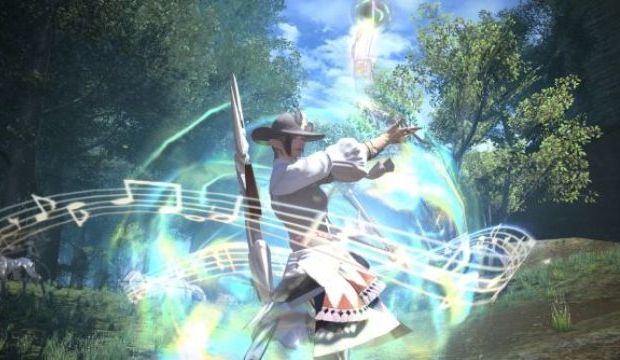
Although unusual for the genre, FFXIV seems to cater to the soloist as much as the party player. Obviously it’s not possible to do everything in the game alone, and if you plan on surviving the bigger encounters against entities like Ifrit, Sheeva and Tiamat (previously featured as the legendary Summons in previous titles), then you’ll need to be a high level player and fight in the company of such. But there is a lot of content for the lone wolf, including several instances built for the soloist, some of which you’ll need to hit certain requirements to “unlock”.
A robust crafting system makes building a self-efficient adventurer much easier, even if it is remarkably intimidating at first. Ingredients and reagents are everywhere, and several sub-specialisations (known as Disciples of the Hand) help you to shape a character that can create things as well as destroy. The first foray into the crafting system, like everything in Final Fantasy XIV, has an initially shallow learning curve; everything you craft is small, simple, requiring fewer and more widely-found ingredients. As you progress, you’ll be making your own armour and weapons, potions, trinkets and elixirs.
Should you decide to form a party with other players, you’re in for a treat. The dynamic class system allows players to switch in and out of specific roles where required and, while you won’t see a fully-equipped Marauder switch to healing duties instantly, it’s still more flexible than most MMORPGs. You can party up in several ways and for several reasons, and it goes without saying that having a group along makes most quests and tasks easier. The hardest part (on the PlayStation 3 version) is the aforementioned communication, but if you can get by with emotes and minimal “typing” you’ll do just fine – it’s more important to know the role of your class in any given situation.
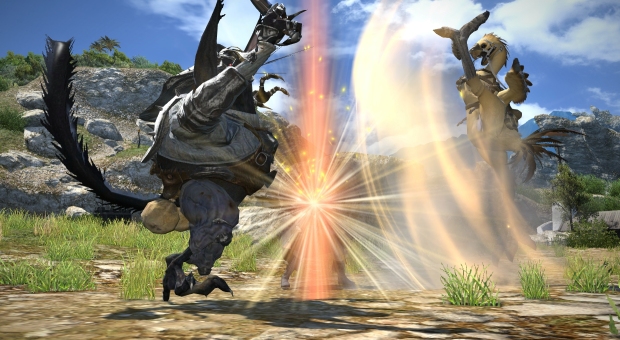
If anything, partying up seems almost at odds with the Final Fantasy universe. While all the games feature party-based combat and narratives that deal with group dynamics and emotional interaction, it’s not usually played out in real time. The feeling of being a tiny cog in a gargantuan machine is still present, but it’s different – you feel less like the all-important central cog and more like a bit player. The main plot might well revolve around you, but you’re always aware that it’s concurrently revolving around millions of others. Nothing new for the MMORPG, but something still very new to Final Fantasy.
Interestingly, FFXIV seems keen to help you understand it. It’s vast and daunting to begin with, which is to be expected, and the comparative safety of the starter zones only hints at the greater adventures to come, but there are tutorials for everything, and a handy log that keeps track of pretty much everything you do.
VERDICT: Despite a few bumps in the road, Final Fantasy XIV: A Realm Reborn is an impressive achievement. The problems that plagued the original 2010 launch have been all but completely eradicated, and A Realm Reborn has the potential to be a truly stunning MMORPG. While the early quests are too simple, too undemanding and too familiar for RPG veterans, they do serve as a fine entry point to help acclimatise you to the world.

VERY GOOD. An 8/10 is only awarded to a game we consider truly worthy of your hard-earned cash. This game is only held back by a smattering of minor or middling issues and comes highly recommended.


